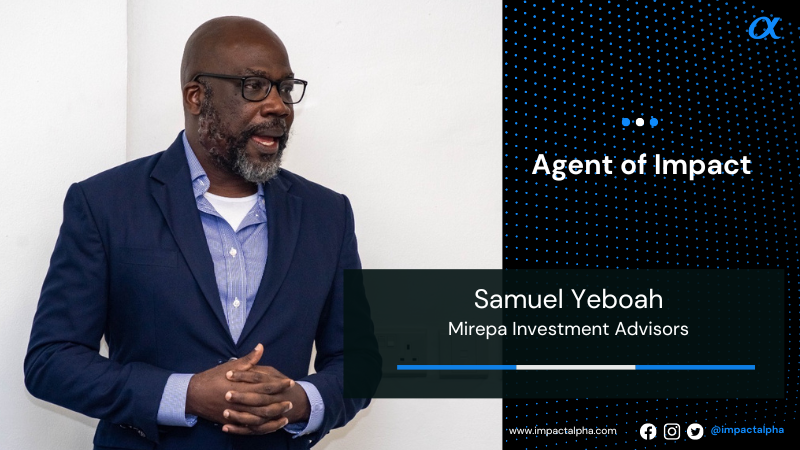ImpactAlpha, January 27 – Gary Forster left his job in logistics at Procter & Gamble to volunteer in Zambia, inspired by the 2005 Make Poverty History campaign to pressure the U.K. government to prioritize global poverty alleviation.
Over the next decade, he took on humanitarian assignments in more than 25 countries. Much of the work – like taxi ambulances in Nigeria and bicycle ambulances in Zambia – was health-focused (and involved a fair bit of logistics).
“I’ve seen these projects and these investments from the recipient-country perspective and have seen first-hand the impact that this kind of support can have on people’s lives,” Forster tells ImpactAlpha.
His field experience helps him stay connected to the overarching purpose of aid and development finance in the work he does now as CEO of Publish What You Fund, a nonprofit organization that calls itself “the global campaign for aid and development transparency.”
Mobilizing capital
Publish What You Fund this week launched the first-ever DFI Transparency Index, which ranks 27 development finance institutions and multilateral development banks on their disclosure of data on capital mobilization and impact (watch the launch video).
With development banks getting more money and power in the name of big agendas like the U.N. Sustainable Development Goals and the Paris climate agreement, the public should raise its expectations, Forster says. “DFIs need to demonstrate their value if they want to play a bigger role.”
When the Dorset, U.K. native joined Publish What You Fund, the aid transparency nonprofit was examining its work in light of the World Bank’s market-moving “Billions to Trillions” report. The report framed up initiatives within multilateral development institutions that, if replicated and scaled, could mobilize trillions of dollars in support of the U.N. Sustainable Development Goals.
“People recognized very quickly that it wasn’t going to be trillions,” Forster recalls. “There were already some analyses showing that development finance institutions weren’t leveraging that much capital, and what they were leveraging was not always external finance—sometimes they were just leveraging each other.”
Forster and the team at Publish What You Fund recognized a need for greater scrutiny in what these institutions, which themselves collectively manage trillions of dollars in assets, were investing in and the impact those dollars—most of which come from the public purse—were having.
Mission impossible?
At first glance, the index is a scathing rebuke of DFI transparency. But it’s complicated.
“The more time I’ve spent working on DFIs, the more aware I’ve become of just how impossible their task is,” he says. “They are trying to put billions of dollars into markets without squeezing out other sources of funding. They are trying to take risk, but not lose money. They are trying to use capital to address rather than exacerbate inequality. They have to be countercyclical. If they get it wrong, they’re destroying markets rather than building them and communities get hurt.”
The new DFI Transparency Index is the result of years of work with civil society organizations, think tanks and DFIs themselves on what investment data should be available to the public, Forster says. “Ultimately we have a duty to ensure that money spent in the name of the world’s poorest is spent well.”











